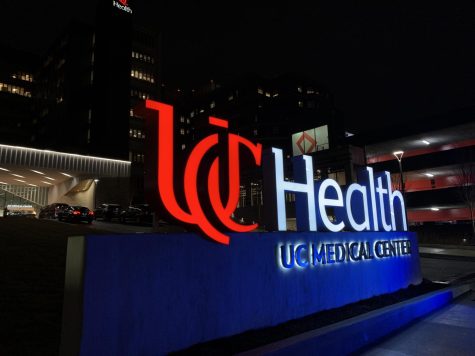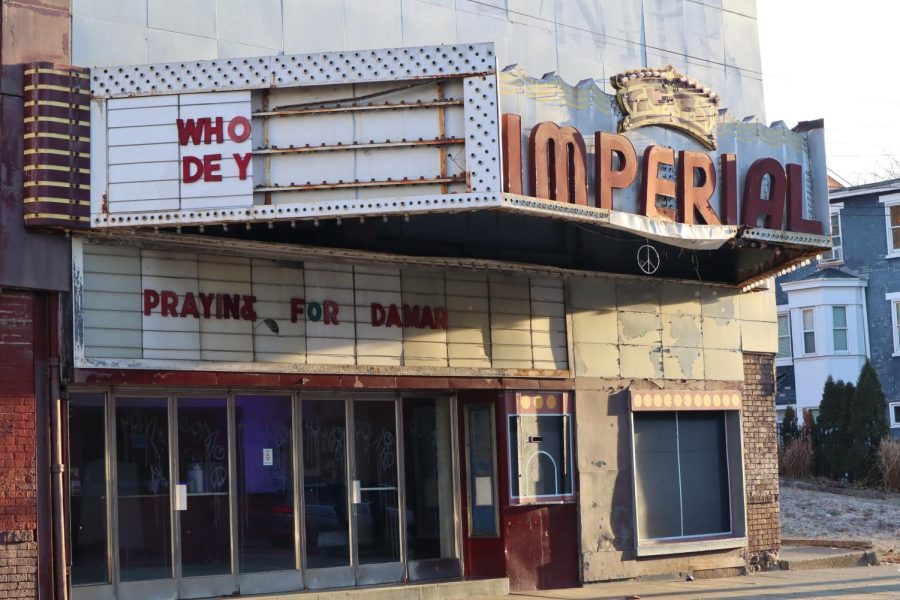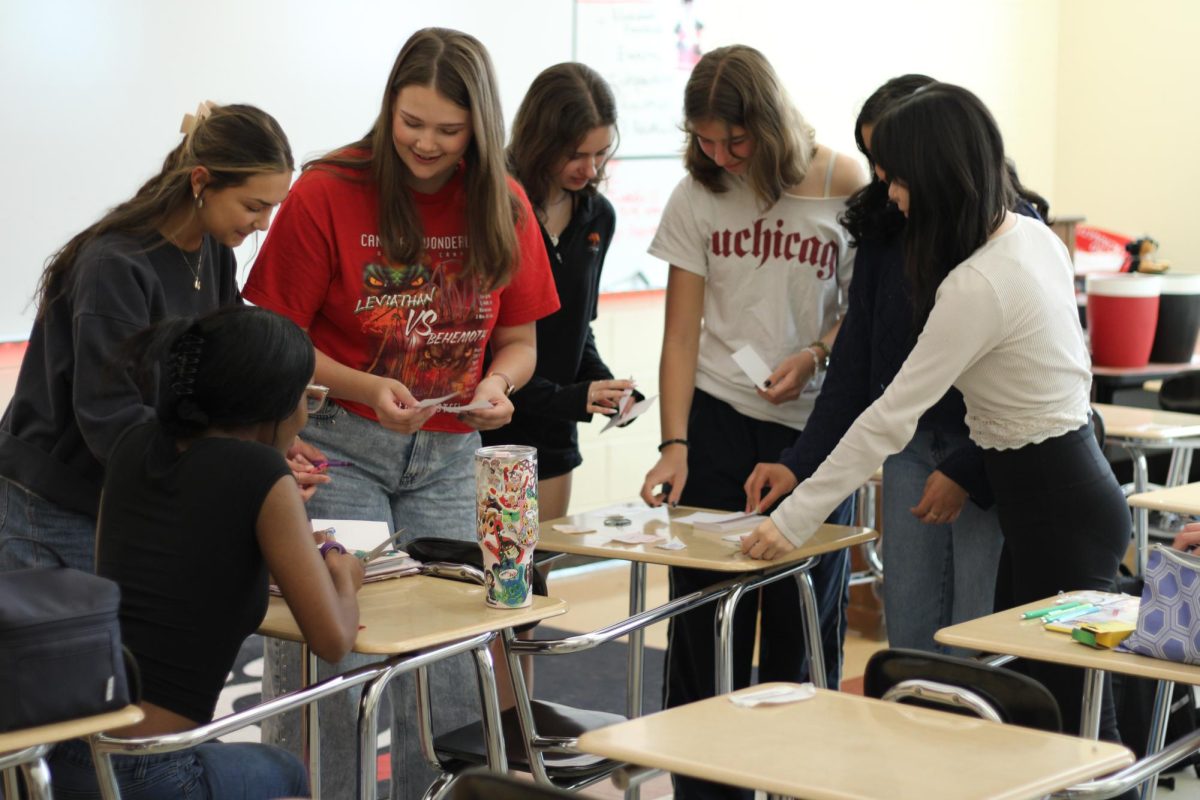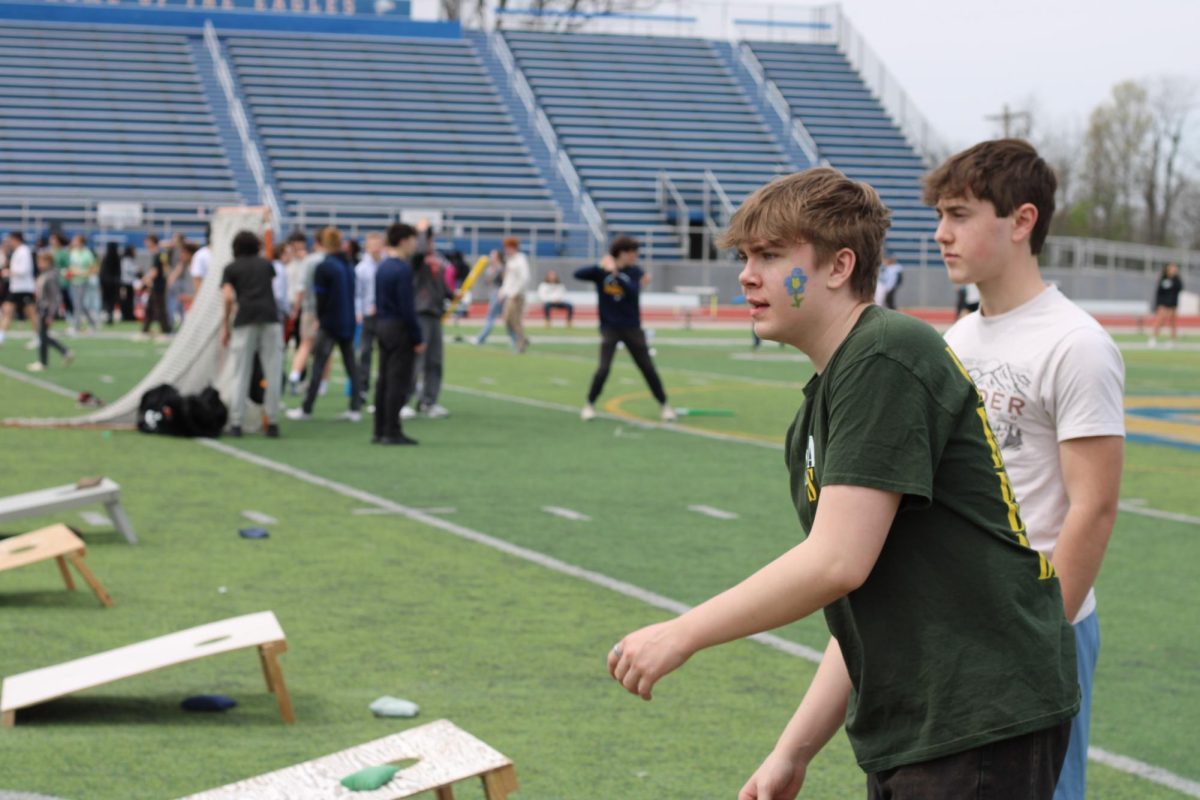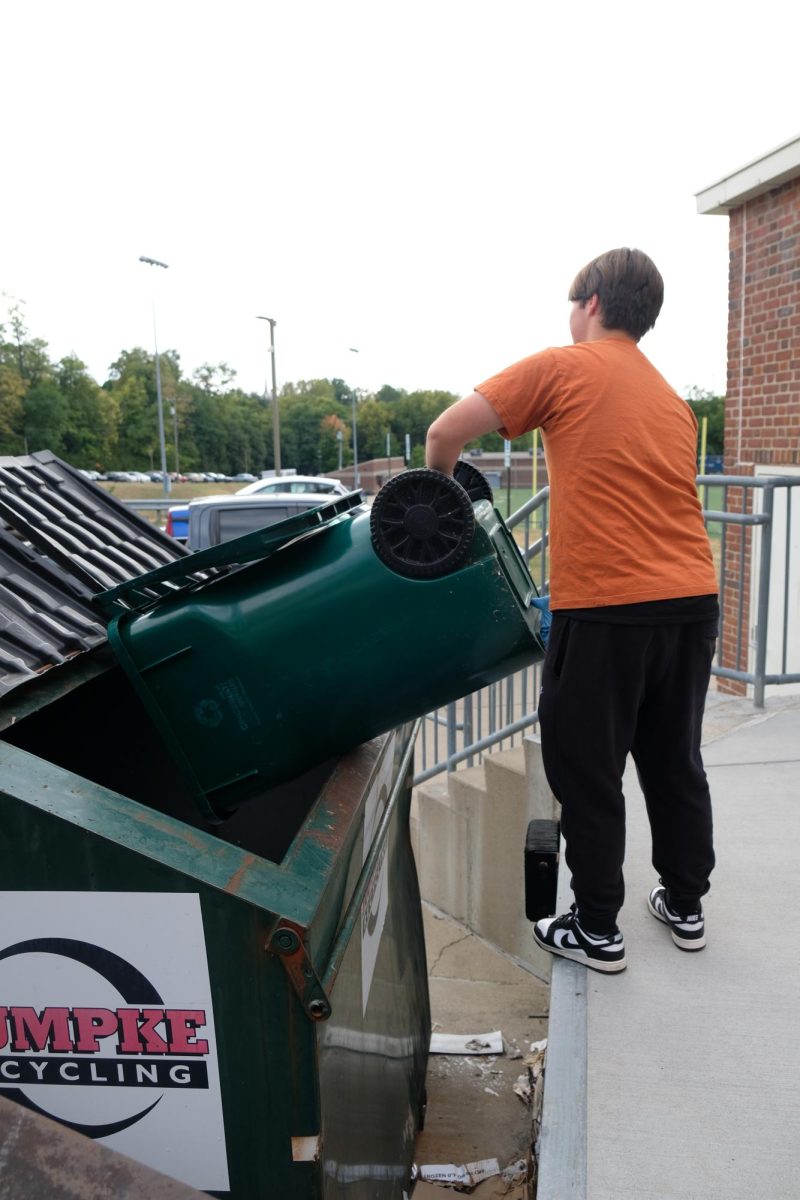Taking a knee for number three
Many NFL teams, including the Eagles and the Patriots, canceled their media availability in respect for Hamlin.
January 23, 2023
On Jan. 2, Damar Hamlin, a safety for the Buffalo Bills, collapsed during the Bengals vs Bills game. Hamlin went into cardiac arrest and had to have CPR administered multiple times before being carried off the field to the UC medical center.
Sunny Dighe, SENIOR, attended the game.
“I was really excited for it. I mean, it’s the first time I’ve been to a Monday night football game. The Bengals were looking pretty strong,” Dighe said. “I thought we had a pretty good chance to win.”
At first, Dighe was confused about what happened and had to look to social media for answers.
“Honestly, I didn’t see what happened because it was pretty low on the field and it happened near the sideline. So from my perspective, he was covered up by people. Immediately after that, I saw the cars go on the field and I was like, ‘Oh, something must be wrong,’ but I never saw the actual impact,” Dighe said. “But then after that, [the crowd] started to become worried because this guy was not getting up after [almost] nine minutes of CPR and the ambulance was just waiting for him.”
Later, Dighe learned that Hamlin went into cardiac arrest, a term that many people hadn’t even heard of before the collapse of Hamlin.
“Cardiac arrest is almost like an umbrella term for a variety of diagnosable heart conditions,” Nathalie Towchik, an athletic trainer at WHHS said. “The primary thing that most people speculate happened with Damar in particular is something called Commotio Cordis.”
Even though cardiac arrest is rare in young adults, it still happens more than most people would speculate.
“I think we’ve had five local Cincinnati high school students either go into cardiac arrest or die from cardiac arrest in the past year or two,” Towchik said.
This has only happened once at WHHS, in 1998, to a 16-year-old student named Gabe Robinson.
“He was playing in a basketball game and collapsed and went into cardiac arrest. He was not able to be resuscitated, and he passed away,” Towchik said.
Now, WHHS has multiple safety precautions in place, including an emergency plan available on the athletics website. Athletics trainers also bring mobile AEDs (automated external defibrillator) to every game.
“We also make sure that our coaches are educated. Every coach is certified in CPR, we teach the class normally,” Towchik said. “We make sure that every coach knows where the nearest AED is to their practice and gate locations.”
Hamlin’s story looks like it will end on a happier note though, as he woke up from his medically induced coma and returned home to Buffalo. However, medical professionals are still unsure if he will be able to return to football.
“I think the main thing is just making sure that he can function normally again, but he seems to be making a full neurological recovery, which is wonderful,” Towchik said.
Towchik and the other athletic directors were deeply affected by Hamlin’s collapse. Towchik is also from the same area of Pittsburgh as Hamlin, so she felt an even bigger emotional connection.
“To see our worst-case scenario come to life, not only in front of the world, but in our city, was really emotional. I think it’s something that we all dread,” Towchik said. “We all know that it’s possible. We all think about it all the time, but to actually see it play out in front of me was really hard to experience and live through.”
Lonzo Montgomery, SENIOR, feels the same way, especially since his brother, David Montgomery, is a running back for the Chicago Bears.
“It makes me really worry about my brother when he’s playing,” Montgomery said. “It just puts things in perspective like, yes, football is a game but it is a contact game. The risk for injury is so much higher.”
However, Montgomery will continue to support his brother even though he expresses his concern for his safety while on the field.
“It’s what he loves to do,” Montgomery said. “Him doing the thing that he loves I guess is worth the risk of him possibly getting hurt while doing it.”
The collapse of Hamlin had a few beneficial outcomes, however. For one, Hamlin’s charity has raised a total of 8.7 million dollars in the past few weeks, some of which will go to the UC trauma center.
“I think that while the situation itself was horrifying and terrifying for everyone, I think we can find a silver lining in it and use this opportunity to promote safety, to encourage people to take CPR to know what to do in case of an emergency like this,” Towchik said. “We can also use it as a means of helping the general public better understand athletic training.”
